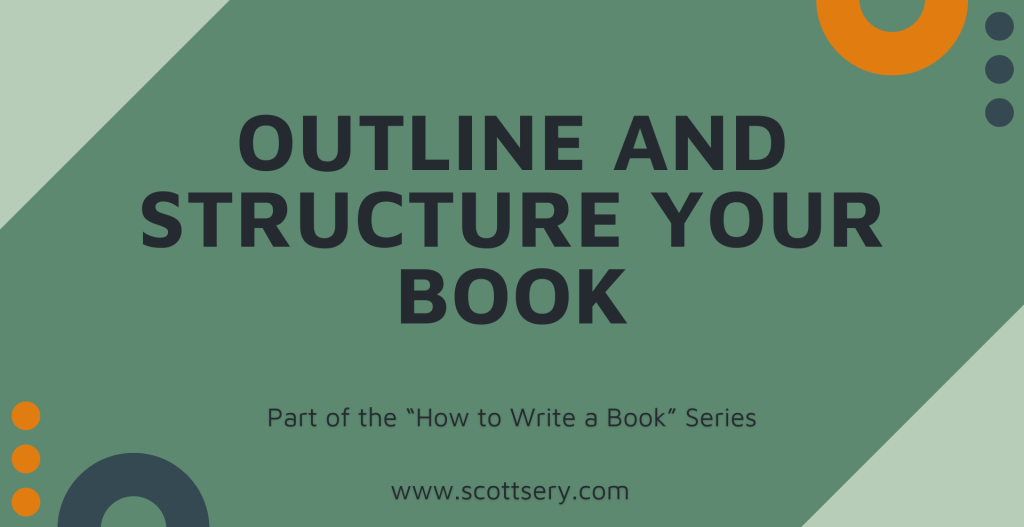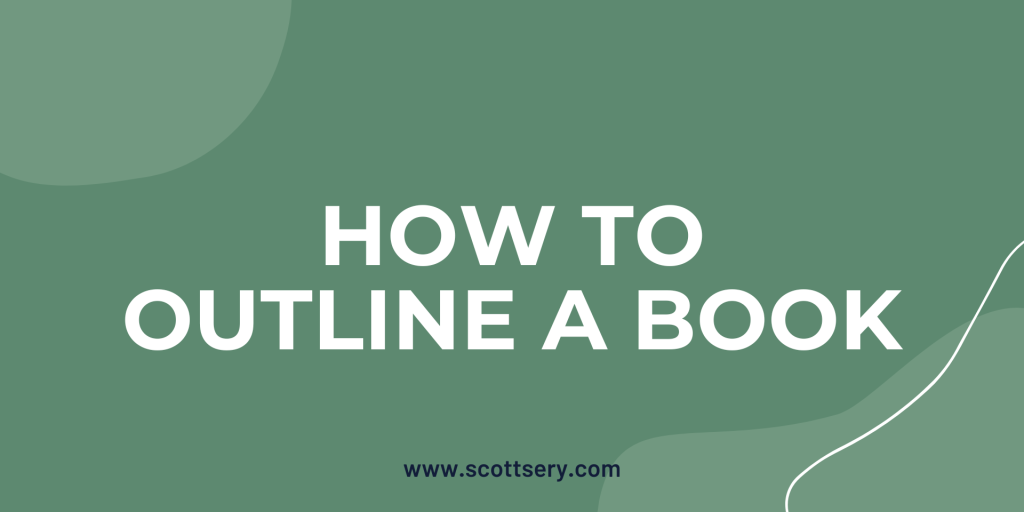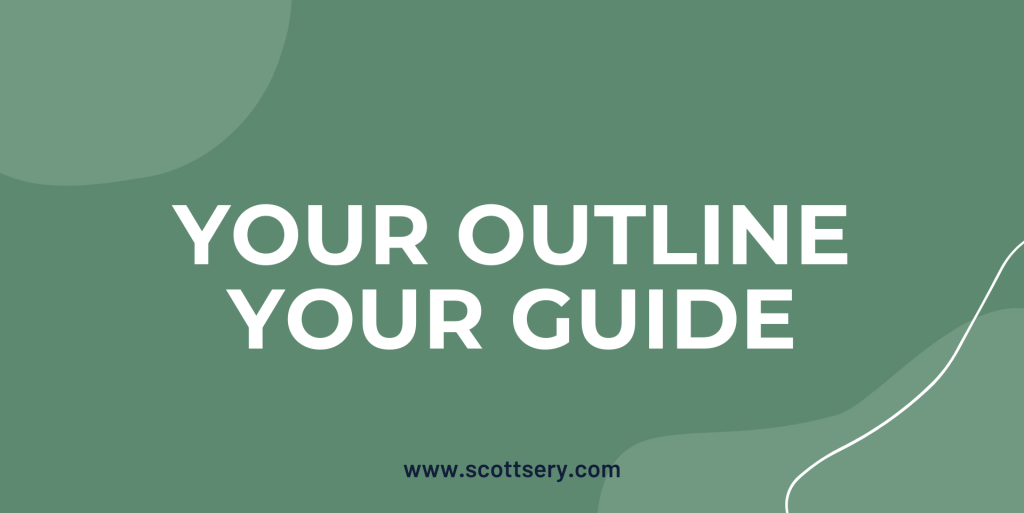
A Strong Outline and Structure Makes the Story Better
What do you think causes books to languish and die? Usually, it’s the content just isn’t well-written or well-thought out. I’ve read a lot of books by independent authors that just didn’t hit very hard. Sometimes the idea was there, but the author wasn’t good at explaining it or putting to words a powerful message.
Aside from someone just not knowing how to write a book, so they write something that is lackluster, many of those books that could be great die because they never even get published. The author fizzles out largely due to a lack of direction. An outline doesn’t kill creativity; it channels it.
Learn how you can take those scattered thoughts, add to them, and turn them into a cohesive book that gets written, published, read, and remembered – a part of the How to Write a Book (And Publish Like a Pro) series.

Why Structure Matters
Many people have ways of recording their thoughts. Some like to journal, some create videos of their adventures and post on TikTok, Facebook, or Instagram (or one of those other lesser-known platforms), some have online diaries, and still, some have podcasts. The bottom line is that a significant number of people have recorded experiences, thoughts, ideas, and concepts over the course of a lot of years. Those are all great methods of preserving the thoughts, but they’re not going to be inspiring to very many people.
Why? Because they’re:
- Disorganized.
- Repetitive.
- Confusing.
- Incomplete.
They’re a great starting point, but if you rely on simply copy and pasting those into a word document, giving it the once over, and sending it off to publication, you’re going to have a really crappy book on your hands.
Instead, using a clear structure and a powerful outline, you get the benefits of:
- Stronger flow.
- Better pacing.
- Clear takeaways.
You wouldn’t get into the car and try to get through an unknown city without a map or a GPS, so why try to write thousands of words without a clear guide on what you’re doing?

Embracing the Power of the Outline
Too many potential authors find an outline to be stifling. They see it as a rigid guideline that absolutely must be adhered to – a veritable prison that cannot be broken away from. This, however, couldn’t be further from the truth. In fact, it’s basically just the opposite. Your outline isn’t designed to confine you; it’s designed to free your mind (insert Morpheus jumping over a building here).
There are three big ways that your outline will actually let you write a more complete and clear manuscript.
Message on Task – You’ve probably listened to a speaker who couldn’t keep themselves focused. Perhaps it was that college professor that started out talking about one subject, but would inevitably go off on some crazy tangent (fun non-tangential story: when you are able to spot these types of lecturers, you can subtly give them prompts that cause their tangents to get a bit wilder). Or maybe you sat through a guest preacher at church, and their sermon was so wildly all over the place you wondered what the message was even about. These types of presentations and talks are hard to follow – how much harder will it be to follow if your book does this? Your outline keeps your message on task.
Sparks Inspiration – One of the most interesting and ironic parts of being a writer is when you want to talk about writer’s block, but you have writer’s block. While the end result is that it gets written, so you don’t know if I’m up against a writer’s block wall right now or not, outlining your work greatly reduces those times when you’re spinning in circles at your desk, bonking your noggin against the desk, trying desperately to think up how to phrase something. Even if you come to a section that you’re stumped, you simply skip to the next part of your outline and start writing that section.
Reduces Omissions – I don’t do a ton of public speaking, but I do some public speaking. Through a handful of networking groups, where I had to present often, or even lead the group, it got to the point where I wasn’t really that nervous (they say people fear public speaking more than they fear death). The biggest thing weighing on my nerves was that I would get up there, and forget a part of my talk. I’d leave out key information and the audience would sit around thinking, “Huh?” Using an outline means you get your core concepts organized, and you’re less likely to forget to include pertinent information that is vital to your story.
How many other benefits can you think up that come with using an outline? Need some inspiration from people who are a little more well known than Scott Sery?
JK Rowling insists on keeping an outline with the basic plot, but then leaves some of it open to imagine and create as she goes along. This works great for fiction, not quite as well for non-fiction.
Joseph Heller, author of Catch-22, was known for his meticulously ordered, spreadsheet-like outlines.
Dan Brown, author of The Davinci Code, carefully planned his intricate plots (and didn’t get lost along the way) with the help of outlines.
Of course, not everyone is on board. Stephen King said, “Outlines are the last resource of bad fiction writers who wish to God they were writing masters’ theses.” But we’re not talking about fiction here, we’re in the non-fiction world.
You should at least keep a basic outline, one that tracks your key points, as you’re preparing to write your book.

Four Styles of Outlining to Keep You on Track
All that to say raise the question, “How should I create my outline?” Different strokes for different folks here, and I’ve identified 4 ways you can outline your work to keep yourself on the right track.
Linear Outline – The linear method is what most people think of when they think of an outline. It’s generally a topic sentence, then perhaps a few bullet points underneath covering the key information. Basically, it’s just like you were taught back in school (all that learning wasn’t completely for naught).
Mind Map – An alternative to the linear method, is the mind map style. Creative thinkers and those who start with an overall big picture may prefer this method. The overall topic and theme go in the middle, and supporting components spoke out from there. When the order isn’t as important, this can be a great method.
Storyboarding – Those visual learners might use the storyboard method more. Think of this a bit like a comic strip, but each panel can be moved and adjusted. You put your key concepts and components into a little box, and then you rearrange them to create the order and flow.
Synopsis Method – Similar to the linear structure, the synopsis method lays the book out chapter by chapter. Instead of a single line that’s the overall thesis and supporting bullet points, you write a summary for each chapter; essentially you do an abstract that explains what will be covered.
Outlining is necessary, but the method of outlining isn’t as rigid. Don’t like any of these styles? Mix it up a little. Do a sort of hybrid form. See what happens in your brain that helps to keep you on track the best, and lean into that one.
My outline method, at least for blogs, is to write all of my subheadings first, then go back and fill in the information to support that heading. So, if you stripped this blog down to just the headings, you’ll have the first words that I write.

Combining Your Outline and Your Structure
When you have your desired structure, and you have your outline at least designed (maybe it’s not entirely filled in yet, it’s time to combine the two). The outline is what will go into the book, the structure is how it’s told.
What you want to figure out is how to organize all of this. It needs to be easy for the reader to follow (we prevent the tangents by using the outline, but that doesn’t necessarily mean it’s easy to follow). Your personal style and your audience will heavily influence this. You can shake things up, and make something unique and new (example coming here soon), but most of the time you’ll want to stick to what’s tested and true.
- Chronological structures are usually the most common. They’re ideal for memoirs, step-by-step guides, how-to books, and more. It would be hard to write a step-by-step guide if you don’t go in chronological order. Nearly all memoirs and autobiographies are chronological – with some flashbacks thrown in for good measure.
- Conceptual structures work well when there isn’t a timeline to follow. You can group things together that are similar in in theme. For example, if you’re writing a book about running a business, you put all of the marketing concepts together, all the financial concepts together, etc. You can still put in those personal stories that make this thing pop, but there’s not really a timeline to follow.
- A hybrid option might combine the two when you’re not fully relying on your own personal story, and also not straight up giving out some concepts. This could be a book about running a business, and you put it in a chronological order of when you started the business, when you scaled, etc. But then you weave in the concepts that you learned along the way.
Want to shake it up and write a best seller that’s popular because you break all the rules? It might work, but you’re risking spending a lot of time on something that flops. Remember the movie Memento? It came out in 2000 and was the story of a man pursuing revenge on another man who murdered his wife. The problem was, though, the protagonist had this weird memory loss that affected his ability to track the killer. The kicker was the way it was told was these little bite-sized bits of a story, in a reverse timeline sort of way. Unique, ended up doing pretty well at the box office but ultimately was a huge risk that could have derailed the entire movie.
Which method of storytelling do you want? Analyze your audience, your expertise, and what you plan to write about, and that should guide you to the right method of structuring your book.

What If Your Outline Needs Re-Organized?
Your outline likely won’t be perfect the first time around. If it is, then I’d argue your book isn’t ready. You’ll uncover key facts, you’ll remember important details, and ultimately you will realize that something needs to be set up earlier in the book, so the latter chapters actually make sense.
It’s all about flow and pacing. Keep the readers engaged and eager to turn the page.
How do you ensure your outline follows the right order? I’m glad you asked.
The book should start with the most compelling story. Something that really hooks your audience and instantly draws them in. This is done in just about every movie, blog, book, and even just sales writing. It’s the, record scratch, “Yep, that’s me. Let me tell you how I got into this mess.” Although, usually a bit more subtle. That story could be the beginning, but it doesn’t necessarily have to be the beginning.
If you’re doing a conceptual outline, you don’t have to group ALL the concepts together. In fact, maybe you don’t want to. You could put them in groups of three: concept a, concept b, and concept c in the first chapter; concept a (expanded), b (expanded), and c (expanded), in the next. If it still makes sense, go for it.
You want to ensure that the reader understands what’s going on, anticipates (but doesn’t fully know) what’s coming up, and has some sort of insight or action that wraps up that chapter and sets the stage for the next. To get this just right, you may need to add more to your outline.

Using that Outline as Your Guide While Writing
Preparation is half the battle… actually, maybe even more. Because once you’ve gotten to this point (know your audience, understand your expertise, structure, outline, etc. etc. and so on and so forth) it’s largely plug and play.
First part of the outline, got it. Write what you know, expound on the topics, and create the story that goes along with it. Build it up so it leads into the next part. Next bullet point, got it. Write what you know, expound, build up.
What happens if something comes up that wasn’t in your outline? Maybe you learn new information, or perhaps you remember something that needs to be in your memoir or autobiography. Outlines evolve. In fact, they should evolve. If you’re not changing, adding, and subtracting, you’re stuck in that outline prison rather than using the outline as a GPS.
Overall, though, this thing is going to help maintain the flow, the tone, and the theme of your book.

Avoid These Common Pitfalls
The biggest, and most common, is the laughably naïve notion of, “I don’t need an outline, I’ll remember everything!” Spoiler: you won’t. You can’t. I even thought, “I’ll remember that amazingly insightful bit of information that I was going to put up at the top but figured it would fit better in the pitfalls section.” And guess what? Now that I’m here, I don’t remember it.
Don’t get too rigid. This is a guide, an ever-changing guide. So, don’t lose your creativity because something’s not on your outline.
If you overload your outline with too many details, you might as well have not outlined at all. You’ll most likely get bogged down in those details, and get stuck on how you can fill in the words.
Be sure to keep that outline going as you write. It’s not a one-and-done. It’s not like grade school where you learned how to do it, and the final project was to merely outline the ideas. Instead, review it every time you sit down, because I’ve even fallen into the trap of writing a section, then checking my outline only to realize I packed all the information into the previous section already.
Make it simple, make it scannable, make sure to change it as things come along.
“I Get it Scott, Now What?”
Now you’re probably wondering how you’re ever going to get this book done. You haven’t even started writing, and you’re staring down the barrel of a huge to-do list. I get it, it’s daunting, it’s confusing, and it’s a bit intimidating (do daunting and intimidating have the same meaning?). The next step is decision time.
Do you want to keep going on this, and write that book? Are you keen on getting it done, but you need a bit more guidance? Then you need to sign up for the Author’s Mastery Academy. It’s a training program that will teach you exactly how to write your book, get it published, and be the rockstar you always knew you were. To do that, you just have to click the button below, and fill out the form.
Or, there’s another option. One that’s a little less daunting, confusing, and intimidating. And that’s to hire a ghostwriter, like Scott Sery (that’s me!) to do it for you. All I need from you is the story, concepts, and ideas. And then I do all this hard work of structuring, organizing, analyzing, and writing. In the end, you’re a published author, without spending hours and hours of your life staring at the computer screen. If that’s your jam, then schedule a time for a call via my calendar below.
